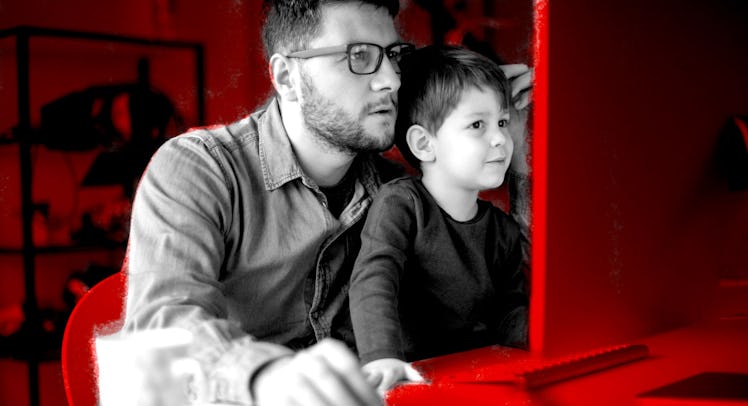How and When to Introduce Children to Computers
If parents aren’t proactive enough to introduce kids to the standard use and operation of a computer, they’ve probably already learned way more than you think

A child’s introduction to computers happens the second they open an app on a tablet or ask Alexa to play their favorite song. As introductions go, it’s not measured, thoughtful, or particularly instructive. Which means that by the time “Shake It Off” starts blaring, any parent who wanted to more deliberately and methodically dip their child into digitized information is already too late. The splash has happened.
“The definition of what is a computer and what is not a computer is getting blurred and it will continue to get blurred even more,” says Dr. Tim Lynch, pioneering researcher of the psychology of computers and founder of Psychsoftpc. “Folks like to compartmentalize. They really do need to broaden their perspective.”
Consider, for instance, the Internet of Things. A refrigerator can now add milk to the shopping list by itself (and browse PornHub for videos of coolers en flagrante delicto). These were activities once relegated to desktops and laptops. A connected appliance is not similar to a computer. It is a computer. And kids interacting with these devices are using computers. And, no, that’s not necessarily a good thing.
There’s little advantage to having young children anywhere near the cutting edge. In fact, Lynch says, introducing children to technology has no real upside until after their sixth birthday when they possess the mental capacity to think a bit more abstractly. Before that, parents should be much more focused on socialization, confidence, self-control, and all the other good traits no one associates with browsing Instagram. Does that make the smart fridge dangerous? Not exactly, but it does mean that the kitchen is at the top of a slippery slope.
“We don’t want kids to get so comfortable with computers that they lose their humanity,” Lynch says. “There needs to be some type of a balance between interacting with computers and technology and getting out with friends and playing.”
Developing good tech habits, then, means limiting access until around Kindergarten. At that point, the introduction of computers at home can coincide with their introduction at school. And the best way to start is on the family desktop or laptop, with a keyboard, trackpad, or mouse.
Far from antiquated, starting a child out on a traditional computer helps them understand concepts of hardware and software. It also provides a more robust method for parental monitoring and control via a variety of programs that can limit time spent on the computer and what a child can access.
The first lesson, according to Lynch, should be to teach the child how to turn the computer off and on. This may seem trivial, but it’s actually pretty crucial for understanding ideas like maintenance and troubleshooting. Parents would feel pretty embarrassed if their kid answered the standard first question of IT professionals with, “How do you turn it on and off again?”
“Kids need to know how to do it the right way,” says Lynch. “And doing it any other way can damage or cause problems for the machine.”
Once a kid is oriented to understanding how to turn the computer on, and use the mouse, trackpad, and keyboard, they can learn how to open applications. At this point, parents should explore and play with their kid, side by side. The important part is helping a child understand the variety of uses a computer has, whether it be gathering information, drawing, painting, or writing. This helps kids understand that a computer is more than a portal to social media and cat videos, although those are admittedly some prime computer uses.
But in the end, it’s about giving the child a sense of respect for the power of computers. “You also want them comfortable with actually using the thing, because they’re going to have to live with it. So we don’t want them to be overwhelmed,” Lynch says.
This article was originally published on